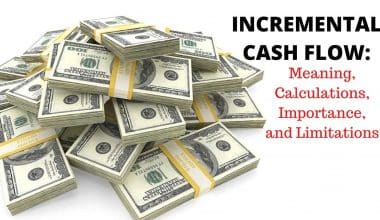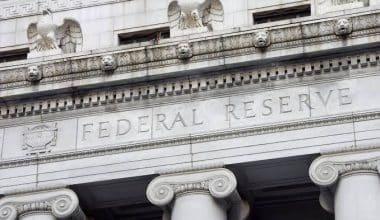Investing your money might be a bit risky, therefore it’s crucial and necessary to keep an eye on the returns. However, among the numerous measures, you can use to gauge the success of your investments, yield is one of them. Yield in finance on the other hand is a measure of how much money securities have made for their investors over a given period of time. It is the annualized cash flow that an investor receives as a return on their stock, bond, as well as real estate investments. In this piece, we go into a deep explanation of what yield finance is all about with regards to the definition, crypto, finance formula, high and poly yield finance as well as how to calculate yield finance.
What Does It Represent?
Generally, yield in finance is the earnings from an investment, typically in the form of interest or dividends. An investor’s money can be earned in two ways: through the yield of an investment and through the closing of a transaction for profitability. Meanwhile, the most common ways to express yield are through a percentage of the original investment or its current market value
Stocks and bonds are basically the two financial instruments most typically linked to yield. A company’s current share price is used as the basis for calculating its share yield. In other words, if the value of an investor’s stock increases, the investor will experience a bigger return on their investment.
On the other hand, if the bond is kept to maturity, the yield can be expressed as either a percentage of its original value or a percentage of its current value.
Yield Finance Definition
A yield is a measure of the ex-ante return to an investor in finance. It is an investor’s return on investment (ROI) can be expressed as a percentage. In other words, the term “yield” refers to the amount of money an investment generates over a specific period of time. As a rule, it is represented as a percentage depending on the security’s current market value or face value and is used to calculate interest and dividends. Basically, common stocks, preferred stocks, convertible stocks, bonds (government and corporate), notes, and annuities are all included in this metric. While a security’s yield includes the interest or dividends it pays out. It is however possible to classify yields as known or anticipated depending on the security’s valuation
Various Types
There are different possible sorts of yields in finance based on the type of investment, the length of the investment, and the quantity of the return;
#1. Dividend Yield
Generally, to get a company’s dividend yield, you divide its yearly dividend payments by the share price. Meanwhile, for dividend investors, this is a common way for taking advantage of recurring dividends. Nevertheless, divide the current share price by the company’s yearly payout to arrive at the dividend yield.
#2. Yield on Stocks
There are two types of returns commonly utilized in stock-based investments: absolute and relative. The yield on cost (YOC), or cost yield, is computed as follows when the purchase price is taken into account:
A company’s cost yield is calculated as the product of the increase in price and the dividends paid out. For instance, when a stock’s price rises and the corporation pays a $2 dividend, an investor has made a profit of $20 ($120 – $100). As a result, the cost yield is equal to 22%, or ($20 + $2) / $100.
For these reasons, some investors may prefer to compute the yield based on the current market price rather than the purchase price. The current yield on the other hand is estimated using the following formula:
(Price Increase + Dividend Paid) / Current Price = Current Yield.
If you divide ($20 + $2) by $120, the current yield is 0.1833, or 18.33 %.
However, due to the inverse link between yield and stock price, the present yield drops when the price of a company’s shares rises.
#3. Bonds Yield
Calculating the nominal yield, which is the yield on annual-interest-paying bonds, is basic and goes like this:
(Annual Interest Earned / Bond’s Face Value)
Treasury bonds that mature in one year with a 5% interest rate have a yield that is computed as $50 / $1,000 = 0.05 or 5%, for example.
However, it is true that the yield on a floating-rate bond pays interest at varying rates. This nevertheless is based on the applicable interest rate at certain maturities, which will fluctuate over its life.
Suppose a bond pays interest on the 10-year Treasury yield + 2 percent, and if the 10-year Treasury yield rises to 2 percent, the applicable interest rate will rise from 3 percent to 4 percent over the course of a few months.
Basically, it’s no different with index-linked bonds, which have their interest payments modified for an index. These indexes may include the Consumer Price Index (CPI), and the inflation index.
#4. Yield to Maturity
Generally, this has to do with if a bond is held to maturity. The yield to maturity (YTM) is the total return predicted on the bond each year. Nominal yield, on the other hand, is determined on an annual basis and might fluctuate year to year. YTM, meanwhile, represents the predicted yearly yield, which is expected to remain stable over the course of the bond’s life.
#5.Yield to Worst
It is possible to get the lowest possible yield on an obligation without fear of the issuer defaulting. However, that’s if you calculate the yield to worst (YTW). For instance, if the issuer applies provisions such as prepayments, callbacks, or sinking money, YTW represents the worst-case scenario on the bond. This yield is a crucial risk indicator since it ensures you meet certain income requirements even in the worst-case situation.
#6. Yield to Call
Specifically, it’s important to know the yield to call (YTC). This is because it is a metric that relates to callable bonds. These however are bonds that can be redeemed by the issuer prior to their maturity date. The amount of interest paid on the bond, its market price, and the time remaining before the call date all go into determining this value.
Yield Finance Crypto
Since 2021 was such a big year for crypto, it’s no surprise to see that this year has started out so well. Generally, we’ve seen a growth in institutional investment in cryptocurrencies like BTC, ETH, as well as SOL. This nevertheless is even with a volatile market that has been battered by waves of volatility. However, in the eyes of many, a cryptocurrency’s most tempting feature is the possibility to generate a yield on investments immediately through crypto finance.
On the other hand, bitcoin has outperformed all other crypto classes in the past four years, making it an obvious finance choice for any company looking for a high rate of yield. As we enter the new digital era, we may expect to see an increase in the use of digital assets as well as currencies. Crypto market finance allows investors to, generate yield, make money, and secure their assets in a short period of time.
Increasing demand for short-term borrowing is being driven by the significant rise of the crypto market. Meanwhile, it has already a market valuation of over $2 trillion. Yield finance on the other hand is essentially a platform that allows you to invest in crypto with scrutiny and cash management options. Options that can reach significantly bigger gains than found in regular financial markets. Hence, it can be used to maximize the full potential of the prospects this affords.
Of course, using a crypto yield product will not guarantee higher returns on your crypto finance. This is because of the volatility and unpredictability that are present in the digital asset business. Nevertheless, as with any high-potential investment, the greatest tools and platforms accessible to you as a user will help you maximize performance and ensure prospective value gains.
High Yield Finance
When credit rating agencies rank a bond below investment grade, such as a high-yield bond (also known as a “non-investment-grade” or “speculative-grade” bond, or simply “junk bond”). Because of the higher defaults and other financial event risks. Nevertheless, these bonds when finance offers high yields than investment-grade securities.
High-yield debt finance carries a greater risk to investors than investment-grade bonds. This is demonstrated by their lower credit ratings. However, to make up for taking on more risk by investing in higher-yielding securities, investors demand a higher return.
In other words, default is the most significant risk for higher-yield bonds. While a failure to pay interest and principal on time could result in a loss of the entire investment. In addition, more than 5% of U.S. high-yield bonds have defaulted on their bonds over the long term. The default rate was in the 5.6 percent to 7 percent range during the liquidity crisis in 1989-90. Likewise, default rates soared to just about 9% during the pandemic of 2020. The financial risk of default in the high yield bond sector rises during a recession because of worse business circumstances.
The majority of high-yield debt finance sources or purchases are made by institutional investors. This includes pension funds, mutual funds, banks, and insurance companies. However, mutual funds are the primary means or source of finance through which individual investors engage in the high-yield market.
While some institutional investors have rules prohibiting them from investing in bonds with low ratings. There may be an institutional investor base for lower-rated securities that does not exist for investment-grade bonds.
Yield Finance Formula
Explanation of Yield Formula. In general, a security’s yield is the amount of money an investor gets back on the money they put into it. Normally, it is usually calculated on an annual basis, although it can also be calculated on a quarterly or monthly basis.
In other words, total return, a broader indicator of an investment’s return, should not be mistaken for yield when calculating return on investment. The formula for figuring out yield is:
Yield = Net Realized Return / Principal Amount
When it comes to stock investing, for instance, there are two types of gains and returns. First, it can be in form of a price increase, where an investor buys a stock for $100 and sells it for $120 after a year. There could be a dividend of $2 per share paid out this year. The dividend yield is calculated by dividing the increase in the stock price by the stock’s original price. For this case, the result would be:
($20 + $2) / $100 = 0.22, or 22%
Poly Yield Finance
Poly Yeld Finance is a next-generation yield farming protocol. Using Poly Yeld Finance on the Polygon network, you may make a passive yield income by using a variety of unique and creative features.
Unlike other yield farms, Poly Yeld finance will not use the deposit fee to buy back and burn the tokens that are staked by its users. Spending money on something like this is pointless. Holders of YELD V2 will be reimbursed for the deposit cost, which we will disperse back to the community.
How to Calculate Yield Finance
- Calculating yield can be done using the following steps:
- Determine the stock’s or bond’s market value or initial investment.
- Determine how much money the investment will bring in.
- Take the current market value and divide it by your annual salary.
- This sum should be multiplied by 100.
The following yield formulas can be used for many types of investments:
Stock yield = (dividends per share / stock price) x 100
Bond yield = (coupon / bond price) x 100
Real estate yield = (net rental income / real estate value) x 100
Conclusion
As an investor, you need to be aware of how your investments are going by keeping track of their yield. Positive or negative changes in the amount of money you’re making from securities might be shown by variations in yield.
FAQs
Is yield the same as dividend?
A company’s dividend or dividend rate is expressed as a dollar figure and is the combined total of dividend payments expected. The dividend yield is expressed as a percentage and represents the ratio of a company’s annual dividend compared to its share price.
How often is dividend yield paid?
Dividends, a distribution of a portion of a company’s earnings, are generally paid in cash every quarter to shareholders. The dividend yield is the annual dividend per share divided by the share price, expressed as a percentage; it will fluctuate with the price of the stock.
How do Yields work in stocks?
The dividend yield is a financial ratio that tells you the percentage of a company’s share price that it pays out in dividends each year. For example, if a company has a $20 share price and pays a dividend of $1 per year, its dividend yield would be 5%
What is Polyyeld?
Poly yield Finance is a next-generation Yield farming protocol on Polygon Network. Poly Yeld Finance on the Polygon network allows you may make a passive yield income.
Related Articles
- Yield: Definition, How to Calculate with Examples, & Types
- Dividend Mutual Funds: Definition, How they Work, Pros & Cons
- Dividend Yield: Meaning, Detailed Examples, Formula & Free Investor Tips
- High Yield Investments: How to Spot High Yield Investments (With Best Options Updated!)
- What Is a Lien on a House: Is it Bad to Have a Lien on Your House






